Coriander Seed And Leaves Health Benefits – Complete Ayurveda Details
Coriander seeds and leaves have been part of Indian culinary since ages. It is used for therapeutic purposes as well. It is also famous for the name Cilantro seeds. Some people genuinely dislike coriander. Interestingly there is a genetic influence on this hatred.
Botanical name and Family: Coriandrum sativum Linn. Umbelliferae family (Satapushpa Kula)
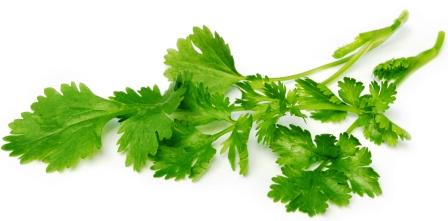
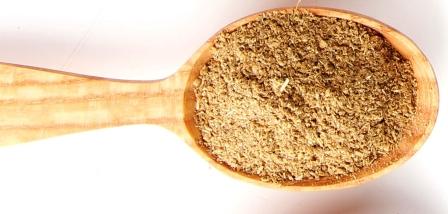
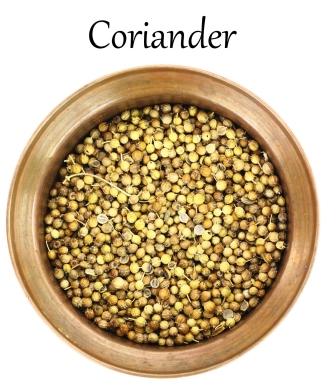
Table of Contents
Medicinal properties
Coriander seed and leaves – medicinal properties:
Rasa (taste) – kashaya (Astringent), Tikta (bitter)
Guna (qualities) – Laghu (light to digest), Snigdha (unctuous, oily)
Vipaka (taste conversion after digestion) – Madhura (sweet)
Veerya (potency) – Ushna (hot)
Effect on Tridosha: Tridoshahara – it balances all the three Doshas
Pharmacological actions –
Fruit – Aromatic, Stimulant, carminative, stomachic, Diuretic
Leaves – Pungent, and Aromatic
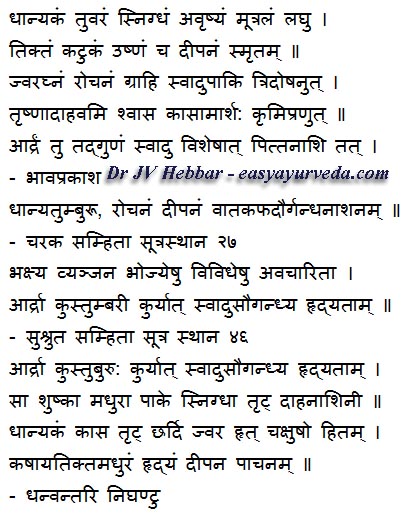
Spices, coriander leaf, dried
Rasa – astringent, bitter
Guna – light, slightly unctuous
Veerya – hot
Vipaka – sweet
Effect on Doshas
Vata balancing
Pitta balancing
Kapha balancing
Coriander health benefits
Coriander is
Avrushya – does not have aphrodisiac property
Mutrala – diuretic, increases urine volume
Deepana – improves digestion strength
Jvaraghna – Useful in fever
Rochana – improves taste, useful in anorexia
Grahi – absorbent, useful in malabsorption syndrome and diarrhea
Daurgandhya nashana – helps to relieve bad odor (bad breath)
Hrudya – good for heart, cardiac tonic
Useful in
Trushna – Excessive thirst
Daha – burning sensation
Vami – vomiting
Shwasa – Asthma, COPD, wheezing, breathing difficulty
Kasa – cough, cold
Arsha – hemorrhoids
Krumi – worm infestation
The wet / fresh variety is similar to the dry, it is especially useful in treating Pitta aggravation.
Part used, Dose
Part used: fruits, whole plant, leaves
Dose: Fruit powder – 3 – 6 grams
Cold infusion – 10– 30 ml per day or as directed by Ayurvedic doctor
Juice – 10 – 20 ml
Hot infusion – 30 -50 ml
Decoction – 50 -100 ml
Varieties
Gramya and Vanya
Morphology
Annual herb with tap root system
Stem – Herbaceous, many cylindrical branches with swollen nodes, aromatic.
Leaves – Cauline, alternate, sheathing leaf base, acute apex, with unicostate reticulate venation
Inflorescence – Compound umbel
Flowers – Outer flowers of the umbel are with large petals, central ones are smaller with equal petioles
Fruit – Cremocarp, ridged, 1 seed in each mericarp
Seed – Endospermic
Home remedy
Coriander home remedy: Easy to prepare coriander drink for fever
Interaction with medicines, supplements
Can this be used while taking Homeopathic medicine?
Yes. This product does not react with homeopathic medicine.
Can this medicine be continued while taking supplements like multivitamin tablets, Omega 3 fatty acids etc?
Yes. Generally, this product goes well with most dietary supplements. However, if you are taking more than one product per day, please consult your doctor for an opinion.
With western
medicines
Seek your
doctor’s advice if you are taking this product along with other western
(allopathic / modern) medicines. Some Ayurvedic herbs can interact with modern
medicine.
If both Ayurvedic and allopathic medicines are advised together, then it is
best to take Allopathic medicine first, wait for 30 minutes and then take the
Ayurvedic medicine.
Research
Modern research:
Cholesterol: Many animal studies have shown coriander seed’s benefits in controlling blood sugar and cholesterol levels. It is also a very good anti oxidant and resists build up of free radicals in the body. (Source)
To reduce cholesterol, 3 – 5 grams of coriander seed powder can be taken along with half a cup of honey water, once or two times a day. Honey water is prepared by adding a teaspoon of honey to half a cup of water.
Ayurvedic medicines
Ayurvedic medicines with coriander ingredient:
Chandraprabha Vati – useful in urinary tract diseases
Brahmi Vati – Used as brain tonic and memory booster
Kalyanagulam – used in liver and skin conditions
Kankayan Vati – used in hemorrhoids treatment.
Ayurveda medicines with coriander as mentioned in Charaka Samhita –
Saindhvadi churna – used in Kshata ksheena – Chi/Kshatakseena Chikitsa
Chitrakadi grutha – Shotha – Chi/Swayathuchikitsa
Dadimadi gritha – Gulma, Pleeharoga, Pandu – Chi/Pandurogachikitsa
Agruvadyataila – Jwara – Chi/Jwarachikitsa
Trayushanadi grutham – Gulma – Chi/Gulmachikitsa
Hingu sovarchaladi grutha – Gulma – Chi/Gulmachikitsa
Pippalyadi Gruhtam – Gulma – Chi/Gulmachikitsa
Hinguvadi gutika – Adhmana, Shoola, Gulma, Pandu – Chi/Gulmachikitsa
Shatyadi churna – Gulma – Chi/Gulmachikitsa
Ayurveda medicines with coriander as mentioned in Sushruta Samhita –
Hinguvadigudika – Adhmana, Shoola, Gulma, Pandu – Chi/Vatavyadi
Ayurveda medicines with coriander as mentioned in Ashtanga Hrudayam –
Hinguvadi churna – Adhmana, Shula, Gulma, Pandu – Chi/Gulmachikitsa
Dadimashtaka Churna – Atisara – Chi/Atisarachikitsa
Pootikaranja Churna – Arsha – Chi/Arshachikitsa
Yavanyadi Churna – Rajayakshma – Chi/Rajayakshmachikitsa
Kushmanda Rasayana – Kasa, Swasa, Kshaya – Chi/Kasachikitsa
Ayurvedic medicines with coriander as mentioned in Bhaishajya Ratnavali –
Dhanyakadi Hima – Daha – Raktapitta chikitsa
Dhanyagokshura Gritam – Mootravata – Mootravata chikitsa
Dhanyanagaradi kwatha – Jwaratisara – Jwaratisara chikitsa
Dhanya shunti – Jwaratisara – Jwaratisara Chikitsa
Ayurvedic medicines with coriander as mentioned in Sharangdhara Samhita –
Dhanyaka panchaka kwatha – Amatisara – Amatisaraprakarana
Guduchyadikwatha – Jwara, Raktavata – Sarvajwaraprakarana
Abhayarishta – Arshas
Home Remedies
Dhanyaka Hima Coriander cold drink
Indications:
Coriander drink is a very easy to make natural cleanser and coolant drink useful in fever, burning sensation, thirst and such other high Pitta conditions.
It is especially beneficial for those, who suffer from excessive body heat, as in summer, or during fever, or in some people, who have Pitta body constitution (who have tendency of complaining of excess heat, all the time irrespective of weather). It is also very good for those who complain of insatiable thirst all the time.
It is one of the best easy to make, natural herbal detox drinks.
Method of preparation
How to make this natural coolant drink –
1. Take one part of crushed coriander seeds.(Eg: 10 grams)
2. Add six parts of water (Eg:60 ml)
3. Keep it covered over one night.
4. Next morning, filter it, and mix with a little quantity of sugar, and drink it in an empty stomach. In ancient times, unrefined Rock candy sugar (mishri) was used. Now also, candy sugar is available, which is often not processed with chemicals.
Those who do not wish to consume sugar, stevia can be a substitute.
Honey is not a good co-drink for this, because it is slightly hot in potency.
Jaggery (gur / gud) can be a substitute for sugar.
Benefits
This recipe for coriander seeds is a natural coolant drink.
It is also a natural detox drink, and the best non-alcoholic summer drink.
It also cleanses all the body and tissue channels and energizes the body.
It is actually a classical drink, explained in the ancient Ayurvedic texts.
Reduces abdominal colic pain due to high Pitta and acidity.
Reduces excessive sweating, sweaty palm and feet.
Partially useful in reducing bleeding during menstruation.
It is useful to relieve hot flashes.
It is called as Dhanyaka hima –
Reference is as follows –
Praataha saasharkaro peyo himo dhaanyaka sambhavaha |
antardaaham mahaa thrishnam jayet sroto vishodhanam ||
– Sharangdhara samhita madhayama khanda – 2nd chapter, 7-8 shloka.
Translation – Dhanyaka hima should be drunk in the morning with a little quantity of sugar to get relief from internal burning sensation, excessive thirst. It also cleanses and detoxifies all the body channels.
Because this remedy is prepared with cold water and because of sugar, it acts as a coolant. Those who are not accustomed to drinking cold water, can use boiled and cooled water.
This is especially good for people with Pitta imbalance or people with Pitta body type. They can use this drink for a long period of time.
It may not be ideal for People with Kapha imbalance / body type to continue this for very long.
Dosage
40-50 ml to be taken in the morning on an empty stomach along with half a spoon of sugar.
How long can it be consumed?
It can be taken for a period of 6 – 8 weeks.
After taking this, it is better to avoid food for at least 30 minutes.
If you want to have your morning tea soon after this remedy, please give a gap of at least 10 minutes.
Shelf life:
It can only be stored for 12 – 15 hours once it is made.
It can be refrigerated and used within 2 days time.
Fever
- The cold infusion of Dhanyaka mixed with sugar and taken in morning alleviates even severe burning sensation immediately.(V.M 1-101)
- Decoction of Dhanyaka and Patola acts as appetizer, expectorant, carminative of Pitta and Vata, antipyretic, digestive and purgative.(V.M 1-130)
- In order to improve the digestive fire, one suffering from fevers should take water processed with Dhanyaka 2 parts and Shunti one part(V.D 1-7)
- Decoction or Dhanyaka and Shunti, added with lemon juice and Sugar is useful in fever in autumn.(S.B 4-23)
Diarrhea
- Decoction of Dhanyaka, Balaka, Shunti, and Bilva alleviates ama shoola, constipation. This is digestive and an appetizer.(V.M 3-21)
- Ghee processed with 4 times of water and Dhanyaka paste should be given in diarrhea caused by Pitta and associated with pain. It is also a good appetizer and digestive.(B.A Atisara 91)
- Water processed with Dhanyaka and Balaka should be given to those suffering from thirst burning sensation and diarrhea. (Bp.Chi 2-14)
Indigestion
Water processed with Dhanyaka and Shunti alleviates indigestion caused by Ama and it is diuretic also.(V.M 6-21)
Piles
The physician should prescribe water processed with Kantakari or Shunti and Dhanyaka acts as carminative of wind and stool.(C.S.Chi 14/128-129)
Gulma
One should take water boiled with Dhanyaka.(A.H.Chi 14-60)
Vomiting
Dhanyaka pounded and mixed with sour and salt is useful in vomiting.(S.S.U49-30)
Powder consisting of Dhanyaka, Ativisha, Kantaka srungi and Gaja pippali should be taken with honey in vomiting, diarrhea in children. (B.A Balaraoga 49-30)
Thirst
Dhanyaka Hima (S.G 2-4-7)
In thirst emerging as a complication in other diseases cold infusion of Dhanyaka with honey and sugar is useful.
Amavata – Rheumatoid arthritis
Decoction of Dhanyaka and shunti is digestive and appetizer, in combination with Eranda root it removes pain of Amavata.(S.G 2-2-65)
Vatarakta – Gout
Dhanyaka 10 gm and Jeeraka 20 gm cooked with Jaggery should be consumed by a patient of Vatarakta.(H.S 3-23-10)
Cough and asthma in children
Dhanyaka mixed with sugar should be given with rice water in treatment of Asthma and cough of children.(B.A Balaroga. 60)
Diabetes
A teaspoon of coriander seeds can be soaked in a cup of water, kept overnight. Next day morning, that water can be drunk, before food.
Other than this, one can consume up to 2 – 3 grams of powder, by using it in your dishes or as it is, drinking the powder mixed in water.
Burning sensation of eyes
Coriander (Coriander sativum) seeds are soaked in water or rose water and instilled to the eyes.
For alleviation of pitta
As per mentioned in Bhojana Kutuhalam in the context of cold drinks, Dhanyaka is macerated thoroughly on the stone and filtered through a cloth, mixed with sugar syrup and dressed with camphor etc and is placed in earthen vessels, this cool drink made with dhanyaka is an excellent alleviator of pitta.
Chemical constituents
Coriandrum sativum -chemical constituents:
β –Sitosterol, D – Maninitol, flavoid glycosides, coriandrinonediol, quercetin – 3 – 0 – caffeyl – glcosides, kaempferol 3 – glucoside, octadecenoic acid(seed), α- pinene, limonene, b-phellandrene, 1,8-cineole, linalool, borneol, b-caryophyllene, citronellol, geraniol, thymol, linalyl acetatae, caryophyllene oxide, elemol methylheptenone, seed oil- umbelliferone, scopoletin, (fruits), volatile flavor compounds, oxalic acids, vitamin C, carotene and calcium (leaves), chlorogenic and caffeic acids, rutin,tricosanol, psoralen, anagelicin, quercitin, aflatoxins, coriandrones C to E, butylphthalides-neoenidilide and Z-ligustilide.
Nomenclature
Kingdom – Plantae
Division – Spermatophyta
Subdivision – Angiospermae
Class – Dicotyledonae
Subclass – Archichlamydeae
Order – Umbelliflorae
Family – Umbelliferae
Genus – Coriandrum
Species – Sativum
Vernacular names, Sanskrit synonyms
In English, Coriander seeds are also known as Cilantro seeds
Family: Umbelliferae
Hindi name: Dhaniya
Telugu name: Dhaniyalu
Bengali name: Dhane
Gujarati name: Dhana
Tamil name: Kottamalli
Kannada name: Kotthambari
Malayalam name: Malli/Kothambala/Kothambalari
Arabian name: Kubjar, Kujwar
Farsi name: Kashneer
Sanskrit synonyms:
Dhanyaka – the seeds resemble grains (dhanya)
Chatra – the inflorescence resembles umbrella
Kustumburu – helps to relieve diseases. कुत्सितं रोगभयं तुम्बयति अर्दयति इत् ।
Vitunnaka – विगतं तुन्नं दु:खं अस्मात् । – helps to relieve agony, pain.
Veshanagra, Kunati, dhenaka
Hrudyagandha – has pleasant smell
Nirukti – word derivation
According to leaves
सूक्ष्मपत्र – हृस्वानि पत्र यस्य। (Small leaves) (R.N)
According to flower
छत्र – छत्राकार पुष्पव्यूहत्वात् । (umbrella shaped inflorescence)(B.P)
छत्रधान्यम् – छत्राकार पुष्पव्यूहयुक्त धान्यम्।
(umbrella shaped inflorescence)(D.N)
According to seeds
धान्यबीज –धान्यवत् बीजमस्य। (seeds like cereals) (R.N)
धेनुक – दीयते इति।(used as drug) (B.P)
वितुन्नकम् – व्याधिनाशकत्वात् । (used as drug) (B.P)
शाकयोग्य – शाके प्रयुक्त: । (used as a vegetable) (R.N)
वेषनाग्र्य – वेषनेषु भोज्य संस्कारक द्रव्येषु श्रेष्ट: । (Importantly used as a spice) (K.N)
According to karma
हृद्यगन्ध –हृद्यो गन्धोऽस्य। (pleasant smell) (K.N)
सुगन्धि –शोभनो गन्धस्य । (pleasant smell) (R.N)
Classical categorization
Charaka Sahmita:
Trushnaprashamana – herbs that relieve excessive thirst
Sheetaprashamana – herbs that relieve excessive cold
Sushruta and Vagbhata: Guduchyadi group of herbs.
IN NIGHANTUS
Soushrutha Nighantu –Vidarighandadi gana
Dhanvantari Nighantu – Shatapushpadi varga
Raja Nighantu – Pippalyadi varga
Kaiyyadeva Nighantu – Aoushadi varga
Bhavaprakasha Nighantu – Hareetakyadi vargas
Shaleegrama Nighantu – Hareetakyadi varga
Nighantu Adarsha – Jeerakadi varga
Priyanighntu – Shatapushpadi varga
Sthanika Karma (Systemic Action)
External Application – Help to reduce burning sensation, pain and swelling. External application of its leaf paste is indicated in headache, Marking nut poison (Skin inflammation due to Bhallataka plant), Paittika sopha (inflammation), Cervical lymphadenopathy, erysipelas etc. In the mouth ulcer its juice can be used for gargling. Its juice can be used for nasal installation in nasal bleeding (Nasagata raktapitta). Decoction is beneficial in conjunctivitis (can be used for eye wash). Dry seed paste can be used for external application for headaches.
Internal administration-
Nervous system – Nervine tonic. Its seeds can be processed with milk (kshirapaka) and consumed in conditions like giddiness, fainting, memory loss.
Digestive System – Improve taste, digestive fire, absorbent. Indicated vomiting, malabsorption syndrome, diarrhea, loss of appetite, Anorexia, abdominal colic pain etc. Also beneficial in worm infestation and in Hemorrhoids.
Respiratory system – Pacifies kapha dosha. Indicated cough.
Excretory System – Indicated in Diabetes (paittika prameha) and in dysuria
Reproductive system – Reduces sukra dhatu
Tapakrama – Indicated in fever associated with burning sensation, thirst, headache etc. In these conditions its cold infusion mixed with sugar can be given. Especially indicated in Sheeta jvara.






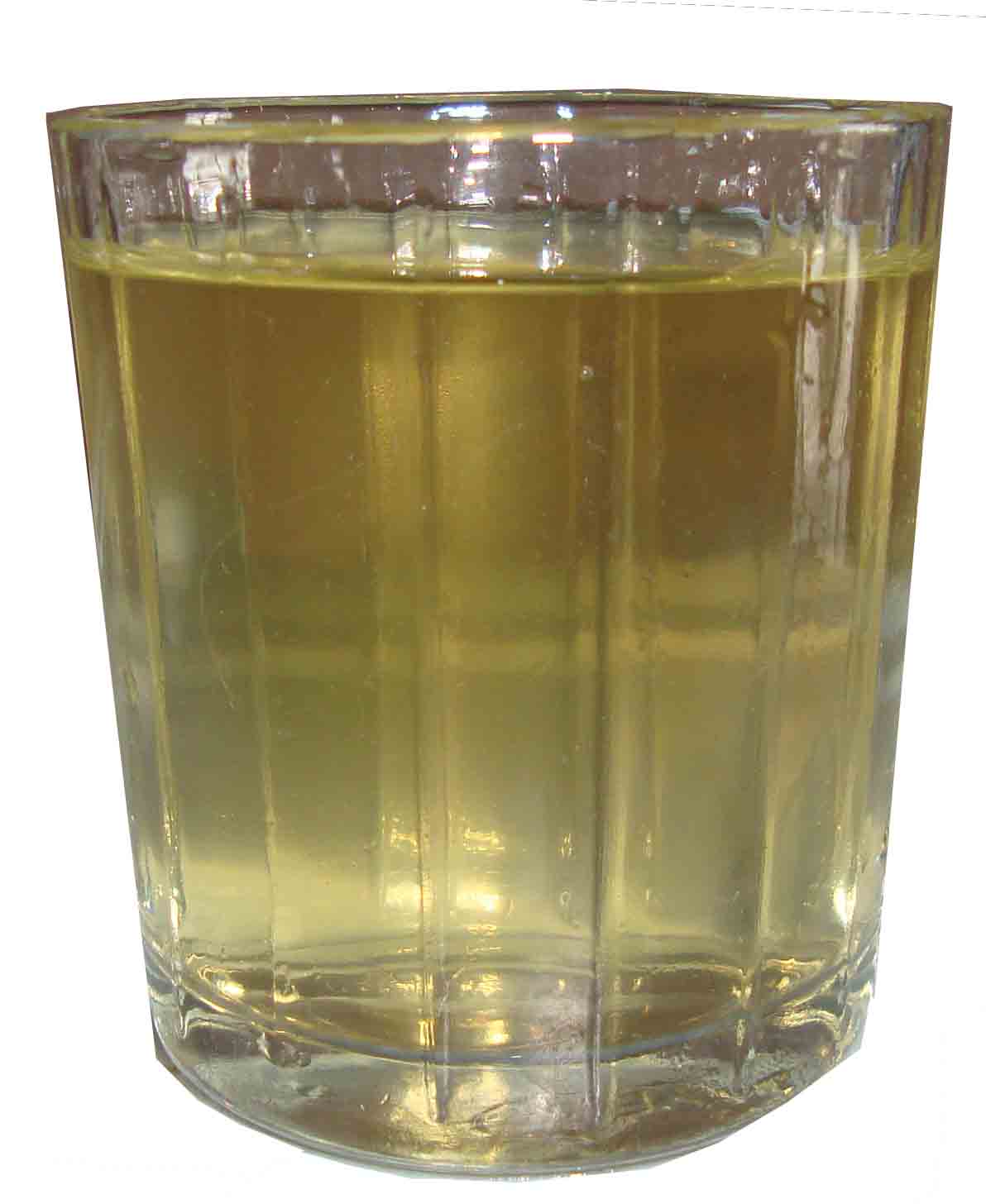





31 comments
su,hi
! So informative. very good information.
Gaurav
Is it better to add coriander powder with food at the beginning of cooking (with the ‘tadka’ or oil+spices mix? Or is it better to add it after cooking the vegetable so that it remains mostly uncooked / unheated?
Dr J V Hebbar MD(Ayu)Author
Coriander can be added in the beginning of the cooking.
sughra
excellent information of a very common kitchen product. A simple herb and so many uses and benefits. Thanks Dr.Hebber for compiling and sharing the information. God Bless
Shubham
Dear Dr Hebbar,
What are the benefits of water decoction made by boiling coriander seeds? How does it effect VPK balance in body?
Thanks.
Dr J V Hebbar MD(Ayu)Author
It decreases Pitta Dosha and slightly increases Kapha Dosha.
Pramod
How much days to drink water, which is soaked with coriander seeds overnight, on an empty stomach early in the morning for burning sensation in urine? If continued are there any side effects,What is normal dose of seeds,Please reply,
Thanks.
Dr J V Hebbar MD(Ayu)Author
It can be continued as long as there is burning sensation.
It can be continued for 4 – 6 weeks time.
pr4amod
Thanks.
Sneha
Thank you for your article.
Ritesh Makharia
Sir , the roasted coriander seeds called as dhana dal too has the same features as coriander seeds ?
ritesh makharia
SIr,
the fresh one is cold and the seeds are hot in potency ?
both fresh and seeds have pitta controlling impact ?
Dr J V Hebbar MD(Ayu)Author
Hi, coriander seed – both fresh and old is a coolant.
bp1339Pramod
Can we put rock sugar in this water ?and what should be the quantity,Please reply,
Thanks.
Pramod
Thanks Dr.
Sandy
Dhanyak has madhura vipaaka, how can this be helpfup in madhumeha? Kindly explain
Dr J V Hebbar MD(Ayu)Author
Hi, Vipaka and tastes are two different things.
For example, long pepper, being a spice also has Madhura vipaka. Vipaka is the taste change that happens during the process of digestion.
Vipaka has some amount of influence on the action of the herb.
Eg: sweet Vipaka of long pepper makes it an aphrodisiac, although most of the spices are not aphrodisiacs.
In this case, the sweet Vipaka of coriander makes gives it a calming effect on mucosa of the digestive tract.
Tina
Dr. Is coriander seed tea is safe during pregnancy ?
(1 Table spoon boiled in water )
Thank you
ritesh makharia
Hi Sir,
the above article shows that dry coriander is hot in potency, pls clarify
Dr J V Hebbar MD(Ayu)Author
Hi, some authors have mentioned it as hot. It is not as hot as spices like ginger and pepper. When infused into water, it is a coolant.
Ragu
Dear Sir,
Many Thanks for such a informative article.
God bless you sir.
Regards
Regu
Dr J V Hebbar MD(Ayu)Author
welcome :), You too.
Gian
Dear Dr.Hebbar, I am impressed by your teachings. Thanks a lot to help us like you have been doing. I am over 70 yr and have been having feet burning problems over 6 months. What are the things to avoid and what medicine will you advise. Any advise will be appreciated. Is there a way to consult you over the telephone?
Chandra
Good evening doctor, what is the use of coriander seed decoction taking on empty stomach, thank u.
Dr J V Hebbar MD(Ayu)Author
Useful in gastritis and to balance Pitta Dosha.
Shilpa
Is coriander useful in lowering cholesterol? What is the preparation method?
Dr J V Hebbar MD(Ayu)Author
Regular intake of coriander seed in diet, or directly seed powder – 3 grams with honey or water, once a day, can be useful.
Sourabh Parashar
C.S. Chi 2-14 , this means Chikitsa Second chapter? Bajikaran Chikitsa ? I see the fourteenth shloka but doesn’t match. Can you recheck ? Thank you
Dr J V Hebbar MD(Ayu)Author
The correct reference is C.S.Chi 14/128-129
Christina
How long would you recommend taking it with the honey water to lower cholesterol before getting it checked?
Dr J V Hebbar MD(Ayu)Author
For 3 – 4 months. If the cholesterol levels are very high, then this method alone might not be sufficient. Guggulu and garlic can be of use.